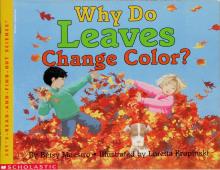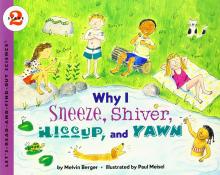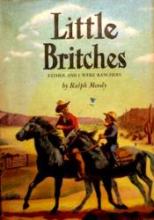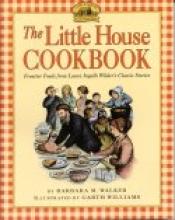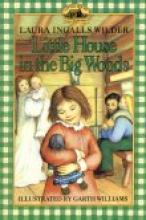No name
Why Do Leaves Change Color?
Our family has really enjoyed this book which explains why leave fall off the trees before winter, where the different colors come from, how weather affects the brilliancy of the colors and lots more. It's written in a very simple manner, so that it's quite understandable even for preschoolers or kindergarteners, and yet it contains substantial information so that even moms (like me) realize that they don't know everything : ) You'll also find labeled pictures of the leaves from different kinds of trees, a cross section of a leaf, an explanation of how trees make food, and how to make leaf rubbings and preserve leaves by ironing them between sheets of waxed paper.
Why I Sneeze, Shiver, Hiccup and Yawn
A simple book with cartoon-like illustrations that explains reflexes and the related workings of the nerovus system – focusing, of course, on those four topics mentioned in the title. The story also invites children to try out a few simple experiments to observe reflexes for themselves. A "Find Out More" section provides "Things to Think About", additional "Test Your Reflexes" ideas and "Fun Facts".
Little Britches
Little Britches
Little Britches is the first book in an eight-book series by Ralph Moody and came so highly recommended that I was concerned about being disappointed. We shouldn't have waited; it is brilliant! This book is particularly well-suited to being read aloud and will be enjoyed by every age grouping. It would be a wonderful book to have Daddy read to the family.
The titles in the series are:
- Little Britches: Father and I Were Ranchers
- Man of the Family
- The Home Ranch (overlaps in time with Man of the Family)
- Mary Emma & Company
- The Fields of Home
- Shaking the Nickel Bush
- The Dry Divide
- Horse of a Different Color
Little Britches is the first part of the story of the author's life, set in the early years of the 1900s. When he was 8 years old, his family moved from New Hampshire to Colorado in an attempt to improve his father's health. Life around the turn of the century comes alive for the reader and listeners, and the descriptions of holiday meals, special treats, school days, cattle ranching, and the weather are fascinating. The family faces many challenges that are still faced in Colorado, and the lessons they learn are applicable to all of us. Mr. Moody's father is a wise, soft-spoken, religious man who teaches his son not only what it means to be a rancher, but also what it means to be a man.
We enjoyed this book tremendously, and only partly because we can identify with the weather challenges and the fight for water rights that are a part of modern-day Colorado. We enjoyed it mostly because of the picture of a loving family, living a simple life, and working for the good of all. This story gives a more accurate picture of life on the prairies than do the Little House books, and its appeal spans a wider age range. There area few spots of cowboy-type rough language that are easily ignored if the story is read aloud. We heartily recommend Little Britches!
Frost on the Windowpane
This deceptively-simple supplement to Little House in the Big Woods packs a wallop of meaningful content into easy and fun art and writing assignments. Not only will it will help children understand the book better, but it provides full-fledged lessons in art appreciation and composition.
The bulk of this resource consists of "chapter activities" which generally include three segments:
1. "Discussion" - Simple discussion questions are intended to start conversations about the book and invite the child to compare their own life with Laura's life. Discussions such as these are excellent for reading comprehension, thinking skills, etc.
2. "Writing" - Assignments are simple and related to the story, suc as writing about a special gift you have received for Christmas. The unique thing about these assignments is that they each have a corresponding worksheet in the back of the booklet that help the child to collect his thoughts, organize ideas, and in the process learn to become a better writer.
3. "Art" - The simple art projects employ a process called "discipline based art education". Rather than simply assign a drawing based on the story, the child is presented with a famous work of art (such as Van Gogh's Bedroom by Vincent Van Gogh) which provides a good example of an artistic feature that they will use in their assignment. In the case of Van Gogh's Bedroom, the child sees how the artist made the picture three dimensional (simple instructions are included) and replicates that aspect of the painting into their own artwork (in this case a drawing of the attic). What a great way to apply art appreciation to the child's work (reminiscent of the Suzuki method in music). All of the artwork can be viewed online (websites are included) or purchased in postcard form from the publisher.
Rounding out the booklet are...
Activities before Reading, which includes projects about the four seasons and about the geography of Wisconsin
Activities after Reading, which includes instructions for making little books relating to the story, a three-dimensional diorama of a scene from the story, planning an evening "Little House Style", comparing the child's life to Laura's and some simple recipes.
I"m very pleased to recommend this very well-thought-out booklet as a worthwhile, family-friendly resource. Suitable for a wide age range, especially grades one thru five.
Little House Country, A Photo Guide to the Home Sites of Laura Ingalls Wilder
The photographer traveled through Wisconsin, Kansas, Minnesota, Iowa, South Dakota, Missouri, and New York to take these pictures. We can see the footbridge over Plum Creek in the summer time and the sun rising over a wintry Silver Lake. We are taken inside Laura's prairie schoolhouse and into the writing study she used as an adult. We are shown a picture of the Ingalls' family Bible with Ma's beautiful handwriting and another of Pa's fiddle. These photographs truly reinforce the idea that the "Little House" books are telling the story of a real family. This book is a "Must Read" for any fan of the series!
The Little House Cookbook
Little House in the Big Woods
The story is widely enjoyed by children (and adults) of all ages and makes an especially enjoyable read-aloud for the little ones (as early as two or three years old).

